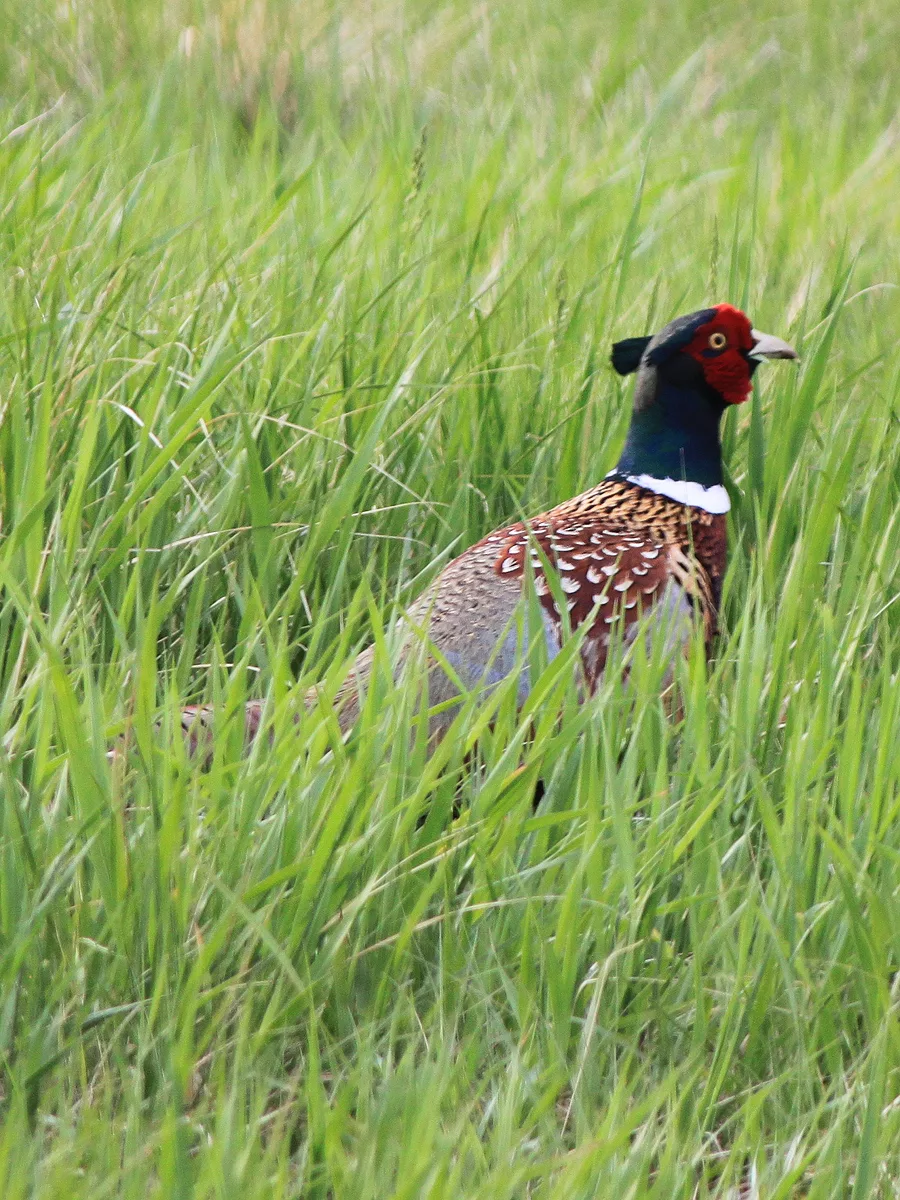
Wildlife find renewed habitat as new grasses grow back after fall or early spring fires during the year’s drier conditions. While it’s disappointing to arrive and find favorite hunting acres burned, the new habitat that results can be greatly beneficial to many species. Simonson Photo.
By Nick Simonson
Cresting the western edge of a recently-added favorite section of public access land on my phone’s hunting app, the private acreage to the south came easily into view. It was noticeable this particular morning not due to the yellow border signs or the old fenceline that separated my hunting space for the morning from it, but for the fact that the formerly dense, grassy stretch was completely black and the skeletal hands of the stands of brush that remained were all that stood out against the pitchy hillsides. Whether the till lines in the public access acres were intentional to curb a management fire, or emergent in an effort to stop an inadvertent burn from claiming it too sometime in the days before was tough to determine, and the fact that the flames had cut into the habitat on the parcel I was walking suggested the latter, at least in certain spaces.
With my walk shortened by the loss of huntable habitat, my dog and I still managed to get a few grouse and pheasants up and enjoyed a breezy hour and a half hike, with the wind coming from behind us and mostly carrying the scent of the charred vegetation away. Nevertheless, in the instant – like a few others I’ve experienced – the disappointment of the lost acres this particular weekend was tangible, but faded with what I know will come in the future. As fire on the plains is nothing new, though certainly a headline-grabbing occurrence this dry autumn, what often follows from such a burn, whether it’s needed to recharge dense, tangle habitat or not, is the regrowth of something better.
I’d seen it play out before when an ignited block of Tannerite set the CRP ablaze behind my local gun club, burning half of the 110 acres I enjoyed walking each fall with youth in our mentored hunt. Thankfully timely spring rains recharged the charred areas, and the nesting cover grew back lush and green, and the pheasants were nearly as thick as the new grass by late summer. Another time, my friends and I had arrived at one of our favorite late season sloughs to hunt December roosters, and after taking a few birds from the dense, sprawling cattail sea the day before, we found the same space smoking and cindery just 24 hours later after a controlled burn. As tough walking as it was in our late season stomping, the area probably needed the burn and by the next autumn, it was just as good, if not better than the season before thanks to the recharge that the fire provided.
So, while the burning of habitat – whether part of a viable management plan and closely watched by landowners, fire departments and biologists on the ground or a natural ignition requiring the sacrifice of many to bring under control – can seem like a negative, many positive things come out of it, as long as the habitat is renewed and managed going forward. In the new grasses, reeds and cattails that emerge in the following seasons the vegetation utilizes the nutrients left behind after the blaze to regrow, sometimes way better than before, or in a manner which allows better access for hunters. Much of our prairies, and even our forested areas throughout the upper Midwest have benefitted from fires as a means of recharging ecosystems and spurring regrowth after the fires have been extinguished. Keep this in mind for those seasons to come, and the likely good hunting that will follow the flames…in our outdoors.
